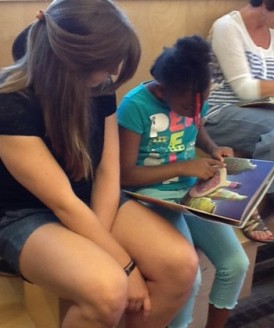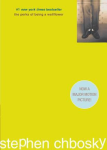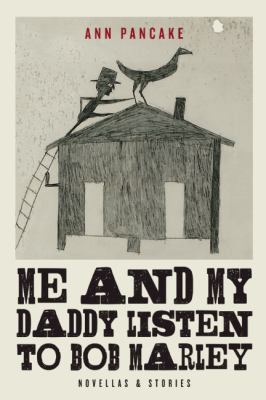Another year over, and once again I failed miserably at reading 100 books.

But I did succeed in garnering the silent judgement of cats everywhere.
Source
All right, maybe “failed” is a strong word. I ended up reading 70 books and that’s nothing to scoff at, right? Scornful sideways glances from feral felines aside, I decided to highlight five of my favorite books and three of my least favorite books of 2015. If it tickles your fancy, you can look at the whole list on the next page.
The Five I Liked the Most:
 Love is a Dog from Hell: Poems, 1974-1977 by Charles Bukowski
Love is a Dog from Hell: Poems, 1974-1977 by Charles Bukowski
I learned about this book of poetry by way of The Limousines’ song of the same name. This was my first foray into the writings of Bukowski and it didn’t disappoint. With lines like “I have gotten so used to melancholia / that / I greet it like an old / friend.” and “I am going / to die alone / just the way I live,” this certainly isn’t Lord Byron or John Keats. This is the kind of stuff you read after a breakup, right before rushing out to do it all over again. These are a few of my favorite lines from the poem Chopin Bukowski:
people need me. I fill
them. if they can’t see me
for a while they get desperate, they get
sick.but if I see them too often
I get sick. it’s hard to feed
without getting fed.
 You by Caroline Kepnes
You by Caroline Kepnes
Stephen King—of whom I officially became a fan in 2015 thanks to It and Four Past Midnight—called this book “hypnotic and scary.” What more of an endorsement do you need? You illustrates how easy it is to stalk a person in the digital age. It’s an eerie, well-written page-turner that’s left me eagerly awaiting the sequel, Hidden Bodies, due out in February.
 Mosquitoland by David Arnold
Mosquitoland by David Arnold
It’s very seldom that a book bring me to tears (in a good way), but this YA debut did just that. The premise—a teenager has to return to her home town via Greyhound when she learns her mother is unwell—was what interested me in this book. Whether in real life or in fiction, I love a good road trip. Just like the tumultuous teenage years, Mosquitoland is equal parts happy and sad. It’s now one of my favorite YA novels of all time.
 Sea of Trees by Robert James Russell
Sea of Trees by Robert James Russell
I came across Aokigahara—a dense forest at the bottom of Mt Fuji and a popular place where people go to commit suicide—while reading one of my favorite websites. Doing a simple Google search for more information on the location led me to this novella. It’s a quick, creepy mystery about a couple searching Aokigahara for the woman’s lost sister. What’s even creepier is that two movies have been made about this forest, one starring Matthew McConaughey released in 2015 and one starring Natalie Dormer that came out just last week. The creepiest bit, though, is that this is a real place. Check out this great documentary short put out by Vice for more on the Suicide Forest.
 Poorly Drawn Lines: Good Ideas and Amazing Stories by Reza Farazmand
Poorly Drawn Lines: Good Ideas and Amazing Stories by Reza Farazmand
This book actually came in for someone else, but I saw it and ordered it for myself. It’s hilarious, nonsensical and was a welcome break from the previous book I’d read, The Price of Salt, which was neither hilarious nor nonsensical. Visit the website of the same name for more giggles.
The Three I Liked the Least:
 Go Set a Watchman by Harper Lee
Go Set a Watchman by Harper Lee
I went into this book with almost zero expectations. I’ve experienced first-hand how disappointing a decades-later followup can be (I’m looking at you, Indiana Jones and the Kingdom of the Crystal Skull). Part of the charm of To Kill a Mockingbird was the way that Lee wrote Scout. Everything that happens is seen through a rose-colored, knee-high lens of childhood. That’s not the case with Watchman. Scout is twenty-six and has returned to Maycomb to visit Atticus. Events transpire that make her question the truths she clung to during childhood. The readers question these truths right along with her and I normally love a good existential rumination, but it’s handled in such a bland and forgettable way here. And that’s not even mentioning how certain characters are almost unrecognizable (ethically speaking) from their Mockingbird counterparts or how the death of a beloved character from Lee’s first novel is only eluded to rather than shown. How this ended up on Goodreads’ Best of 2015 list is baffling, especially when almost every patron I talked with about it also didn’t like it. I don’t want to waste anymore digital ink complaining about it, so I’ll just echo Philip Hensher‘s comments: it’s “a pretty bad novel.”
 Star Wars: Aftermath by Chuck Wendig
Star Wars: Aftermath by Chuck Wendig
Unlike Go Set a Watchman, I had at least one expectation for this book–that it would prepare me for the galactic landscape after the fall of the Empire. Sadly, this book did little to elucidate the mystery of what happens between the end of Return of the Jedi and the beginning of The Force Awakens. The plot takes its time getting started and by the time it does, I wasn’t nearly as invested in the characters as I should have been. These weren’t familiar characters like Luke Skywalker or Han Solo, so I didn’t particularly care what happened to them. Not to mention the new characters all came across as annoyingly self-assured. Because of this, I felt like there were no real stakes in book at all. But maybe that’s on me; it’s been a long time since I’ve read supplemental Star Wars material. There is one scene of Han Solo and Chewbacca aboard the Millennium Falcon, but as a whole, the book skews toward poorly-written fanfiction. In the plus column, I’ve got to give credit to Wendig for introducing the first gay hero in the form of ex-Imperial soldier Sinjir Rath Velus as well as a lesbian couple. In a universe where there are literally hundreds of different alien species, Star Wars has never been that concerned about diversity … but that’s a blog post for another day.
 American Pastoral by Philip Roth
American Pastoral by Philip Roth
This is up there (or down there) with The Train from Pittsburgh as one of my least favorite, most hated, severely unenjoyable reads of 2015. The actual plot of this book–an all-American family is torn apart after their daughter blows up a convenience store at the height of the Vietnam War, with musings of the rise and fall of the American Dream sprinkled in–could be boiled down to probably fifty pages. The other 350 pages of Roth’s novel are made up of tangential ramblings including, but not limited to, the history of Newark, the minutiae of Miss America contests and more information on glove-making than any human ever needs to know. It was frustrating for me to read through these prolonged chapters filled with walls of text and just when I thought that there was no point to be made–that maybe I’d picked up a New Jersey history book by mistake–and I was about to give up, Roth would wrap up his tangent and continue with the narrative. In It, Stephen King was similarly long-winded while detailing of the history of the fictional town of Derry, but King held my interest far more than Roth did in describing a place that’s only a six -hour drive away. Again, I have no one to blame but myself–I only read this because first-time director Ewan McGregor filmed the adaptation here, but getting through this book was such an ordeal that I’m now in no hurry to see the movie, despite my well-documented love for Pittsburgh on film.
Did you set or reach any reading goals in 2015? Do you have any reading goals for 2016 or any tips on how I can finally get to 100? Sound off in the comments below!







 The Perks of Being a Wallflower
The Perks of Being a Wallflower Ready Player One
Ready Player One Glaciers
Glaciers A Tree Grows in Brooklyn
A Tree Grows in Brooklyn



 by Richard Dowden are two that will definitely bump their way to the top! Another mini goal I have for myself is to read a couple of nonfiction books. I have a tendency to shy away from nonfiction!
by Richard Dowden are two that will definitely bump their way to the top! Another mini goal I have for myself is to read a couple of nonfiction books. I have a tendency to shy away from nonfiction!











